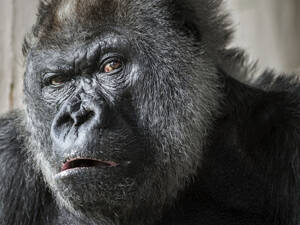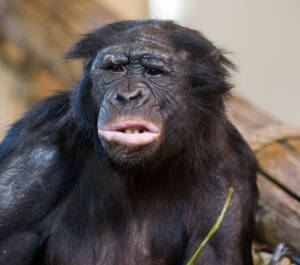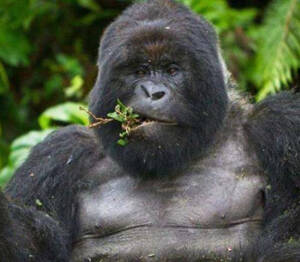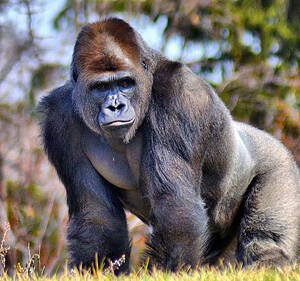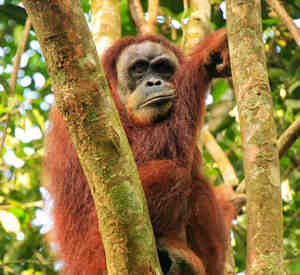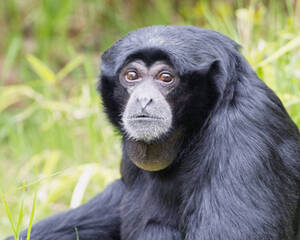King Kong
IUCN
LCBasic Information
Feature
Silverback gorillas are older male gorillas whose back fur has turned silver-gray.
Distribution and Habitat
There are two major habitats of gorillas in the west and east. The habitats in West Africa are located in Congo, Gabon, Cameroon, Central African Republic, Equatorial Guinea, and Nigeria, and are commonly known as West African gorillas. The habitats in East Africa are located in the eastern part of the Democratic Republic of the Congo, Uganda, and Rwanda, and are commonly known as East African gorillas. West African gorillas mainly live in the tropical rainforests in the lowlands of the Democratic Republic of the Congo. East African gorillas mainly live in the Virunga Mountains and the Bwindi Mountains at the border of the Democratic Republic of the Congo, Uganda, and Rwanda.
Gorillas live in tropical rainforests, from lowlands to mountain rainforests and bamboo forests at an altitude of 3,000m. They prefer the edge of the forest, the riverside of the secondary forest, and other environments.
Appearance
Its body is extremely stout, sturdy and reckless. Its height is not much different from that of humans, but its weight is much larger. The male is 140-200 cm long and weighs 110-250 kg, with the largest reaching 350 kg; the female is 140-155 cm long and weighs 80-150 kg. Generally, its whole body is covered with long black hair, but its face, ears, hands and feet are hairless, and it has no whiskers. Its facial skin is very wrinkled, and it looks very ugly and ferocious. It has a large head, a low forehead, and a well-developed sagittal ridge on the top of its head. The male also has a thicker crown pad, so it looks tall and raised like a tower, with a high brow ridge. The eyes are deeply sunken, the distance between them is wide, and the eye membrane is brown. The bridge of the nose is sunken, the nostrils are very large and shiny, and there are raised folded nose wings. The ears are very small. The snout is prominent, the mouth is large, and the canine teeth are well-developed, like
Details
The common name of the gorilla is the gorilla, the silverback gorilla, which is the largest primate in existence and the animal closest to humans except for the two chimpanzees. The silverback gorilla is not a new species of gorilla, but the hair color on the back of the older (about 12 years old) male gorilla changes from black to silver gray.
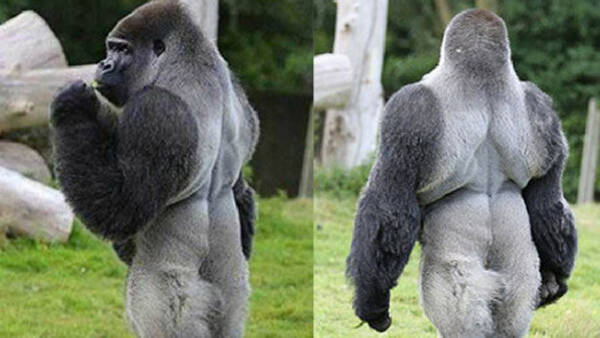
Orangutans live in groups of about 2-37 individuals, led by an adult silverback male gorilla, who usually inherits the leadership position after a few years. Their groups are very stable, and the relationship between members is closer than that of chimpanzees.
The gorillas live mainly on the ground and are good at climbing trees, but they cannot swim and will not even wade through shallow streams. They are omnivorous and mainly vegetarian, with 85% of their food being leaves, stems and buds, in addition to roots, flowers, fruits and insects. Highland gorillas eat meat, bird eggs and chicks. The gorillas have very dexterous hands and can use them to collect and process food.
The gorillas do not have a fixed estrus season and do not have sexual skin swelling. Males can mate at any time, while females usually follow one male for life. The menstrual cycle and gestation period of females are similar to those of humans. The gestation period is about 258 days, with one baby born per litter and a lactation period of 2 years. The cub weighs 2-2.5 kg at birth and grows very quickly. It can feed on plants in 2 and a half months. The female must abstain from sex for 2-4 years after giving birth. During this period, she concentrates on taking care of the cub, holding it in her arms in the early stage and letting it ride on her back in the later stage. They sleep together every night and are very attached to each other until the cub can live independently. Therefore, some males try to kill the cubs in order to mate with females to speed up the recovery of the females' sexual desire. It is said that in some groups, an average of one-third of the cubs die from this cruel infanticide.
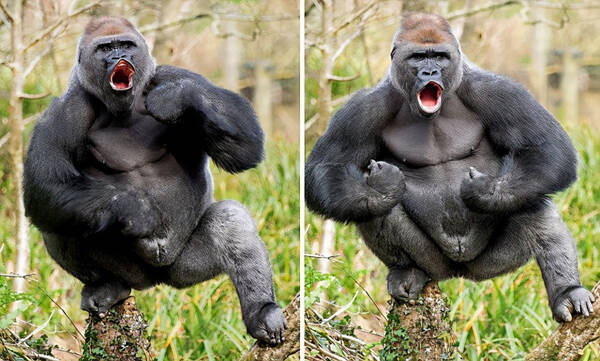
Cubs usually follow their mothers for three to four years, during which time the leading males in the group will also take care of the cubs, but they will not hold them. Females usually reach sexual maturity after 10 to 12 years (females in captivity reach sexual maturity earlier), and males usually reach sexual maturity at 11 to 13 years. Gorillas can generally live 30 to 50 years. The record so far is a gorilla in the Philadelphia Zoo, which lived 54 years. The average lifespan in the wild is about 35 years, and can reach 40-50 years in captivity.
Gorillas are protected animals.
Protect wild animals and stop eating game.
Maintaining ecological balance is everyone's responsibility!

